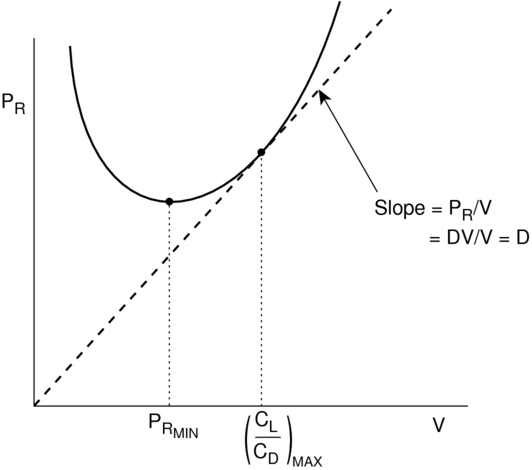Originally Posted by
flipfloppity

Hello all,
I'm trying to figure out whether or not (L/D)max corresponds to the minimum point on the total drag curve (i.e. drag vs. velocity). If you look at Page 2 in
this thread, particularly posts #16 and #19, there is some disagreement about the topic, but it doesn't seem to have been fully resolved. Originally I thought that (L/D)max was independent of the minimum drag, since the drag curve does not account for lift, which is obviously an input to finding (L/D)max. Now I'm not so sure. Can anyone shed some light on this? Thanks!!
Post #16 is correct. Post #19 says Post #16 is incorrect, but then cites a source that contradicts himself and supports Post #16.
POST #16:
Originally Posted by
joepilot

There are a couple of errors on some of the previous posts. L/D max is not the same as minimum drag. Minimum drag (max endurance, holding speed, (or, in glider terms, min sink)) is at the low point on the total drag curve. L/D max (best glide distance) is at the tangent of the line from the origin touching the total drag curve.
POST #19:
Originally Posted by
shdw

Of the 3 hyperlinks, only one, the 2nd one, "13.2 Power Required", still works. That's a link to a Massachusetts Institute of Technology source ... I would give it a high score for credibility.
Once you get there, look for the "Next" buttons to take you to successive pages. Click on "Next" twice and you'll land on "13.4 Aircraft Endurance."
There you'll find a diagram that shows the relationship between Min Drag and L/D max, Figure 13.5:
(The Y-axis is labeled P sub R (Power Required), and we know for level, unaccelerated flight, Power Required = Total Drag.)

As you can see, L/D Max occurs at the tangent of a line from the origin of the diagram to the total drag curve ... as was stated in Post #16.
.